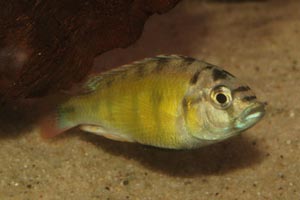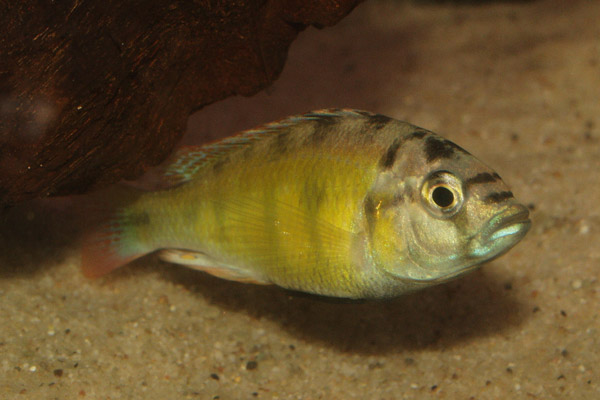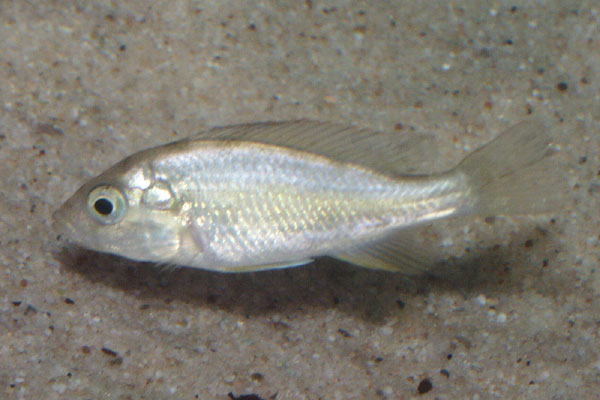

Species Profile | Images | Breeding Report | Similar Species

(Other members of the genus Haplochromis)
ADULT SIZE: 10 cm
WATER CONDITIONS: Moderately hard and alkaline
TEMPERATURE RANGE: 24-26 C
FOOD: Feed Haplochromis obliquidens live and dried foods
DISTRIBUTION: This species comes from Lake Victoria
AQUARIUM CARE: H. obliquidens is a particularly attractive, and particularly endangered species from Lake Victoria.
BREEDING: Matriarchal mouthbrooder
Have you bred Haplochromis obliquidens? Why not fill in a breeding questionaire?, or examine existing Haplochromis obliquidens breeding reports
Other members of the genus Haplochromis
Other cichlid species
Other species from Lake Victoria

CH44. Lake Victoria cichlids are on the brink of extinction, due to the introduction of the highly predatory Nile perch

The female, pictured here, has none of the colour of the male
BREEDING: Matriarchal mouthbrooder
Have you bred Haplochromis obliquidens? Why not fill in a breeding questionaire?
This page summarises breeding reports provided by visitors to this site, along with some statistical analysis. Please feel free to contribute - whatever your experience!
| |||||||||
|
| ||||||||
|
| ||||||||
| |||||||||
|
| ||||||||
Remember, each record represents only one persons experience; if you had different results, or used different methods, please share your experiences
| Water conditions: Moderately hard and alkaline | Water temperature: 24-27oC |
| Disposition: Somewhat aggresive on occasions | Community tank?: Never |
| Spawning Method: Adult fish removed from tank | Breeding problems: none |
| Sex ratio: Roughly equal | Breeding difficulty: Very easy |
| Sucess: Very unsucessful | Years Experience: 3 |
| Other Comments: I bought a pair 3 years ago after seeing the stunning male at my LFS - luck would have it the female was available AND HOLDING - ie she was holding eggs in her Buccal cavity (Mouthbrooder)- I placed the female into a holding tank and she spat 12 fry 2 days later. The male in my Malawi tank was joined by the female 2 days later after re-conditioning. This pair breed regularly, the resulting fry have been either sold or I keep a few back and now have a colony of them - one male is totally Black with Crimsen fins - stunner. One male will become dominant and colour up - subordinate males dont colour up so well but they will fight with each other but no lasting damage. Very easy to breed, keep in Hard water and good filtration, feed Chichlid astax crumb/spirulina stix/earthworm stix. These fish start to breed at a very young age. | |
| Date this record created: 14th December 2009 | Breeding date: 2009 |
| Breeder: Bungy | Location: Portsmouth, UK |